Source:

Bite from rand’s fall is yet to come
by Mariam Isa,
2014-01-26 11:10:55.0
SO FAR, the rand’s sustained slide against most major currencies has not fed into inflation. However, the reprieve for South African consumers may be short-lived.
News on Wednesday that consumer prices nudged up to just 5.4% last month from 5.3% in November — well below expectations — took markets and analysts by surprise.
But the rand’s steep slide poses something of a bigger risk.
On Thursday, it set a new five-year low after breaking the key R11 to the dollar level, which means that it has depreciated by about 60% since April 2011 when it stood at R6.53 to the US currency. The rand has depreciated by more than 15% against a trade-weighted basket of currencies over the past year in a trend that normally pushes up the cost of imports and fans domestic inflation.
“The rand is now headed for an eighth straight quarter of losses and breaking the R11 mark puts it in the league of crisis levels despite the offshore environment having stabilised somewhat,” said ETM analytics strategist Sean McCalgan.
Global trends are partly to blame for the currency’s depreciation. The US Federal Reserve has begun tapering its official bond-buying programme, which has pumped large amounts of cash into emerging markets.
However, strikes in the manufacturing and mining sectors have taken a toll on the rand, as has the large deficit in South Africa’s current account, which is being financed by volatile portfolio inflows — foreign purchases of domestic bonds and shares.
It normally takes changes in the level of the rand six to 10 months to feed into consumer prices. However, inflation has now significantly undershot consensus forecasts for three months in a row, which on the surface is good news because it means interest rates are unlikely to rise in the medium term.
But scratch a bit deeper and there is cause for concern. Domestic demand has been so weak that it has limited the ability of producers and retailers to pass on price increases.
Consumers are unable to spend in the face of high debt levels and slow growth in employment and disposable income.
Eventually, either companies will have to pass their rising costs on to consumers or will be forced to close.
“We have had consecutive periods of excessive weakness in the currency — somewhere, something has to give,” said Vunani Securities economist Ilke van Zyl.
“Inflation will eventually fall because consumers will be hurt to such an extent that demand will collapse,” she added.
What this means is that South Africa’s already sluggish pace of economic growth may stutter more than it has already. Some analysts are predicting that the economy will fail to achieve official forecasts of quicker growth of about 3% this year. Ms van Zyl is expecting it to expand by 2.5%.
“South Africa may slip into a perennial malaise, continued tepid growth ... and it may continue to result in underperformance,” said Standard Bank chief economist Goolam Ballim on Wednesday.
He warned that the economy’s potential growth rate — the pace at which it can grow without igniting inflation — might have fallen below 3%, from 3.5% a decade ago. The problem was that when capacity remained idle for a long time, it became obsolete, he said.
Figures from the Reserve Bank showed that South Africa’s leading economic indicator, which points to changes in the business cycle six to 12 months in advance, dipped by 0.2% in November last year. It has now declined six out of the past nine months.
“The current trend in the leading indicator suggests the South African economy will remain under pressure during the first half of 2014. This is largely due to domestic circumstances,” said Stanlib economist Kevin Lings.
Worryingly, the indications are that the weak economy will have to contend with higher inflation this year — economists predict that consumer price increases will breach the upper end of an official 3% to 6% target range in the middle of the year.
One of the problems is that fuel prices are starting to rise in response to the weaker rand. They rose by 17% last month, making it one of the main contributors to inflation during the month. Fuel prices rose by 39c this month and are set to climb by another 30c next month.
Food prices are also a threat. Last month, they fell by 0.1%, taking the year-on-year change down to 3.5%, from 3.8% in November. But this was largely owing to a collapse in meat prices prompted by oversupply as farmers reduced their herds to cope with a feed shortage. Meat supply is set to dwindle and drought in many parts of the country have pushed prices for maize, a key component of the consumer price index (CPI), to record peaks.
The Reserve Bank sees the weak rand as the main threat to the inflation outlook and is likely to reiterate this at its monetary policy meeting this week.
Ms van Zyl said there were other reasons why the rand’s effect on inflation had been muted. One was that service prices made up more than half of the CPI basket since its overhaul at the start of 2012. Another was that electricity prices rose more slowly than they did in 2012.
• This article was first published in Sunday Times: Business Times
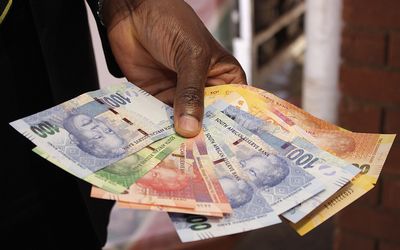
Picture: PUXLEY MAKGATHO
SO FAR, the rand’s sustained slide against most major currencies has not fed into inflation. However, the reprieve for South African consumers may be short-lived.
News on Wednesday that consumer prices nudged up to just 5.4% last month from 5.3% in November — well below expectations — took markets and analysts by surprise.
But the rand’s steep slide poses something of a bigger risk.
On Thursday, it set a new five-year low after breaking the key R11 to the dollar level, which means that it has depreciated by about 60% since April 2011 when it stood at R6.53 to the US currency. The rand has depreciated by more than 15% against a trade-weighted basket of currencies over the past year in a trend that normally pushes up the cost of imports and fans domestic inflation.
“The rand is now headed for an eighth straight quarter of losses and breaking the R11 mark puts it in the league of crisis levels despite the offshore environment having stabilised somewhat,” said ETM analytics strategist Sean McCalgan.
Global trends are partly to blame for the currency’s depreciation. The US Federal Reserve has begun tapering its official bond-buying programme, which has pumped large amounts of cash into emerging markets.
However, strikes in the manufacturing and mining sectors have taken a toll on the rand, as has the large deficit in South Africa’s current account, which is being financed by volatile portfolio inflows — foreign purchases of domestic bonds and shares.
It normally takes changes in the level of the rand six to 10 months to feed into consumer prices. However, inflation has now significantly undershot consensus forecasts for three months in a row, which on the surface is good news because it means interest rates are unlikely to rise in the medium term.
But scratch a bit deeper and there is cause for concern. Domestic demand has been so weak that it has limited the ability of producers and retailers to pass on price increases.
Consumers are unable to spend in the face of high debt levels and slow growth in employment and disposable income.
Eventually, either companies will have to pass their rising costs on to consumers or will be forced to close.
“We have had consecutive periods of excessive weakness in the currency — somewhere, something has to give,” said Vunani Securities economist Ilke van Zyl.
“Inflation will eventually fall because consumers will be hurt to such an extent that demand will collapse,” she added.
What this means is that South Africa’s already sluggish pace of economic growth may stutter more than it has already. Some analysts are predicting that the economy will fail to achieve official forecasts of quicker growth of about 3% this year. Ms van Zyl is expecting it to expand by 2.5%.
“South Africa may slip into a perennial malaise, continued tepid growth ... and it may continue to result in underperformance,” said Standard Bank chief economist Goolam Ballim on Wednesday.
He warned that the economy’s potential growth rate — the pace at which it can grow without igniting inflation — might have fallen below 3%, from 3.5% a decade ago. The problem was that when capacity remained idle for a long time, it became obsolete, he said.
Figures from the Reserve Bank showed that South Africa’s leading economic indicator, which points to changes in the business cycle six to 12 months in advance, dipped by 0.2% in November last year. It has now declined six out of the past nine months.
“The current trend in the leading indicator suggests the South African economy will remain under pressure during the first half of 2014. This is largely due to domestic circumstances,” said Stanlib economist Kevin Lings.
Worryingly, the indications are that the weak economy will have to contend with higher inflation this year — economists predict that consumer price increases will breach the upper end of an official 3% to 6% target range in the middle of the year.
One of the problems is that fuel prices are starting to rise in response to the weaker rand. They rose by 17% last month, making it one of the main contributors to inflation during the month. Fuel prices rose by 39c this month and are set to climb by another 30c next month.
Food prices are also a threat. Last month, they fell by 0.1%, taking the year-on-year change down to 3.5%, from 3.8% in November. But this was largely owing to a collapse in meat prices prompted by oversupply as farmers reduced their herds to cope with a feed shortage. Meat supply is set to dwindle and drought in many parts of the country have pushed prices for maize, a key component of the consumer price index (CPI), to record peaks.
The Reserve Bank sees the weak rand as the main threat to the inflation outlook and is likely to reiterate this at its monetary policy meeting this week.
Ms van Zyl said there were other reasons why the rand’s effect on inflation had been muted. One was that service prices made up more than half of the CPI basket since its overhaul at the start of 2012. Another was that electricity prices rose more slowly than they did in 2012.
• This article was first published in Sunday Times: Business Times


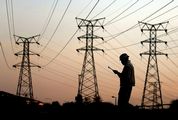


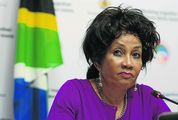
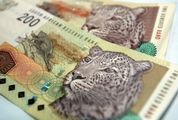


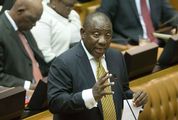















Register/Login
Close XMy News
You can only set up or view personalised news headlines when you are logged in as a registered user. Thereafter you can choose the sectors of industry in which you are interested, and the latest articles from those sectors will display in this area of your console.
Login or Register.Top Stories
My Watchlist
You can only set up or view your share watchlist when you are logged in as a registered user. Thereafter you can select a list of companies and enter your share details to monitor their performance.
Login or Register.My Clippings
You can only clip articles when you are logged in as a registered user. Thereafter you can click on the "Read later" icon at the top of an article to save it to this area of your console, where you can return to read it at any time.
Login or Register.Change: -1.21%
Change: -1.31%
Change: -1.11%
Change: -1.12%
Change: -2.16%
Data supplied by Profile Data
Change: 0.00%
Change: 0.00%
Change: -1.21%
Change: 0.00%
Change: 0.00%
Data supplied by Profile Data
Change: 0.04%
Change: 0.12%
Change: 0.22%
Change: 0.00%
Change: -0.29%
Data supplied by Profile Data
Change: 0.00%
Change: 0.00%
Change: 0.00%
Change: 0.00%
Change: 0.00%
Data supplied by Profile Data